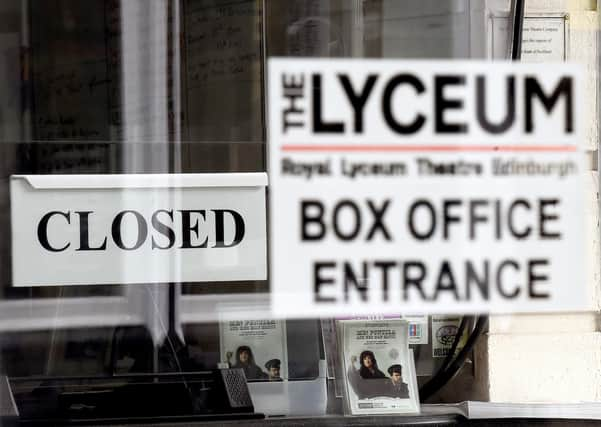Scotland’s arts sector should move outdoors to survive – Brian Ferguson


After more than two months of lockdown and shutdown for the Scottish cultural centre, there has been an unshakable feeling of doom and gloom gathering pace. With each passing week, it has felt like walls have been gradually closing in on the nation’s artistic infrastructure. While events and festivals have long since been cancelled, leaving the rest of 2020 looking threadbare to say the least, the first real crack became visible last week when Edinburgh’s Royal Lyceum Theatre announced it was going into hibernation and had been forced to put two-thirds of its workforce at risk of redundancy.
It brought into the public domain the kind of issues which hundreds of arts organisations the length and breadth of Scotland have no doubt been grappling with since the first restrictions on events were announced on 12 March.
Advertisement
Hide AdAdvertisement
Hide AdThe Lyceum’s actions had chilling echoes of the moves by the National Trust for Scotland to mothball dozens of its attractions and potentially lay off more than 400 staff. Both have sent shock waves across the wider cultural sector and raise an ominous question. If these two long-running and much-loved institutions are having to consider such drastic action, which other cornerstones of Scottish cultural life are in serious trouble?
Creative Scotland chief executive Iain Munro’s own grim verdict on the early impact of the Covid-19 crisis came last week with a warning that the scale and severity were “daunting” to try and address, despite emergency support, and that many of the organisations and companies it funds “are being forced to contemplate their ability to continue”. Most venues seem to believe reopening is likely to be unviable while social distancing measures are in place. There seems little prospect of that ending this year.
But surely there are some glimmers of optimism out there? I had to get to stage three of the Scottish Government’s lockdown road map, which is unlikely to kick in until July, to find any mention of cultural venues reopening. Even then, it is only museums, galleries and cinemas that are listed. But the government has also suggested the first live events will also be permitted again in this phase – albeit it with “restricted numbers and physical distancing”.
Now, this may be something to do with the fact that we seem to have enjoyed an almost unbroken spell of good weather during lockdown, but my head was suddenly filled with images of musicians, actors, dancers and acrobats performing outdoors. I suddenly imagined street performers on the Royal Mile in August, crowds taking their marked-out seats at the Ross Bandstand in Edinburgh or Kelvingrove in Glasgow, where official spots for buskers are created. I imagined impromptu performances on waterfront walkways, promenade theatre in parks, and art trails through forests. I could see all-ticket crowds watching dramatic light shows unfold public buildings and landmarks that have been locked up for months.
Advertisement
Hide AdAdvertisement
Hide AdAll of these may sound ambitious right now, but I think some could be fast-tracked to the second phase, when groups of friends and family will be able to meet up outside, bars and restaurants will be able to serve food and drink outside, and sporting events can resume. With imagination, ingenuity and modest funding they could help businesses with their recovery and bring life, colour and enjoyment back to our public spaces. But, more importantly, they could give companies, artists, makers and technicians some much-needed income and impetus to help get them through the downturn.
A message from the Editor:
Thank you for reading this article on our website. While I have your attention, I also have an important request to make of you.
With the coronavirus lockdown having a major impact on many of our advertisers - and consequently the revenue we receive - we are more reliant than ever on you taking out a digital subscription.
Subscribe to scotsman.com and enjoy unlimited access to Scottish news and information online and on our app. With a digital subscription, you can read more than 5 articles, see fewer ads, enjoy faster load times, and get access to exclusive newsletters and content. Visit www.scotsman.com/subscriptions now to sign up.
Advertisement
Hide AdAdvertisement
Hide AdOur journalism costs money and we rely on advertising, print and digital revenues to help to support them. By supporting us, we are able to support you in providing trusted, fact-checked content for this website.
Joy Yates
Editorial Director
Comment Guidelines
National World encourages reader discussion on our stories. User feedback, insights and back-and-forth exchanges add a rich layer of context to reporting. Please review our Community Guidelines before commenting.